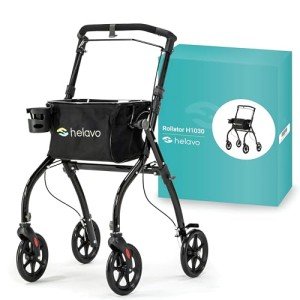5 Laws That Anyone Working In Comfortable Walker Should Be Aware Of

The Comfortable Walker: Finding the Right Balance Between Comfort and Mobility
When it pertains to mobility help, there's a huge range of choices offered, but couple of are as essential as the walker. A comfortable walker can considerably boost the lifestyle for people needing support for walking. In this post, we will delve into the crucial elements of a comfortable walker, compare some top models in a detailed table, and provide insights through FAQs to help in picking the right walker for your requirements.
What is a Comfortable Walker?
A comfortable walker is developed to offer support while permitting the user to keep balance, posture, and flexibility of movement. The most effective walkers come with features that prioritize convenience, such as adjustable height, cushioned grip manages, lightweight frames, and even extra aspects like built-in seats and storage compartments.
Key Features of a Comfortable Walker
- Adjustable Height: Ensuring the walker is at the best height for the user is necessary to promote good posture and efficient mobility.
- Cushioned Hand Grips: Soft manages can reduce pressure on the hands during use, preventing fatigue and boosting comfort.
- Weight Capacity: Selecting a walker that accommodates the user's weight can enhance stability and security.
- Wheels vs. No Wheels: Some walkers come with wheels for easier maneuverability, while others are designed without wheels for more stability.
- Storage Options: Walkers with baskets or pouches help users carry personal items with ease.
Let's take a more detailed take a look at some of the most popular comfortable walkers on the marketplace.
Contrast Table: Comfortable Walkers
| Walker Model | Adjustable Height | Weight Capacity | Wheel Type | Additional Features | Cost |
|---|---|---|---|---|---|
| Invacare Walker | Yes (32"-37") | 300 pounds | 2 front wheels | Foldable, convenience grips | ₤ 78.00 |
| Drive Medical 10210 | Yes (29"-38") | 300 lbs | 4 wheels | Lightweight aluminum, padded seat | ₤ 89.99 |
| Hugo Walker | Yes (32"-38") | 300 lbs | 4 wheels | Detachable storage bag, padded back-rest | ₤ 85.00 |
| Medline Rollator | Yes (30"-37") | 350 pounds | 4 wheels | Foldable, cushioned seat | ₤ 99.99 |
| Lumex Walkabout Junior | Yes (30"-36") | 250 lbs | 4 wheels | Adjustable back-rest, seat, and manages | ₤ 119.00 |
Summary of Walker Features
- Weight Capacity: All walkers noted have a capacity varying from 250-350 pounds, important for guaranteeing safety and stability.
- Wheeled vs. Non-Wheeled: While 4-wheeled walkers offer easier movement, they usually need a bit more strength to browse.
- Foldability: Most designs are created to be portable and easy to keep when not in usage.
Health Benefits of Using a Comfortable Walker
A comfortable walker can offer many health benefits, consisting of:
- Enhanced Stability: Protects users from falls, which is vital for keeping self-reliance.
- Increased Mobility: Facilitates easier motion and participation in day-to-day activities, minimizing isolation.
- Enhanced Posture: Encourages correct posture and body alignment, minimizing stress on the back and joints.
- Strength and Endurance: Using a walker can help enhance core and leg muscles over time, boosting general mobility.
Picking the Right Walker
Choosing the correct walker is vital for comfort and effectiveness. Here are some elements to consider:
- Consult with a Healthcare Professional: Always start with expert assistance, particularly if there specify medical conditions influencing mobility.
- Test for Fit: If possible, attempt a number of models to gauge which fits best in terms of height and balance.
- Screen User's Needs: As mobility conditions alter, upgrading the walker might become essential.
- Assess Storage Needs: Consider individual items that might need to be carried along and choose if built-in storage is essential.
FAQs About Comfortable Walkers
Q1: What if my walker doesn't feel comfortable?
A1: Many walkers come with adjustable heights and devices. If discomfort persists, seeking advice from with a health care company can help determine underlying concerns.
Q2: How do I keep my walker?
A2: Regularly check the screws, wheels, and grips for wear and tear. Tidy it utilizing moderate soap and water, avoiding abrasive materials.
Q3: Can I utilize a walker on irregular surface areas?
A3: While many walkers are flexible, it's necessary to pick a walker with sturdy wheels and brakes for stability on irregular terrain.
Q4: Are there walkers designed for outdoor use?
A4: Yes, some walkers are developed with bigger wheels and shock absorbers, making them suitable for outdoor surfaces.
Q5: How typically should I change my walker?
A5: If your walker reveals signs of wear, or if your mobility needs change, it may be time to invest in a brand-new design for safety and convenience.
A comfortable walker is an invaluable tool that allows individuals to preserve their self-reliance and enhance their lifestyle. With Easy Maneuver Walker of features and designs readily available, every user can discover a walker that fits their unique needs. By prioritizing convenience, stability, and performance, a well-chosen walker can cause a more enjoyable and active lifestyle. Constantly keep in mind that investing in mobility aids is an investment in general well-being. Whether you're helping yourself or a liked one, understanding the significance of comfort in mobility aids is important for making the right option.

